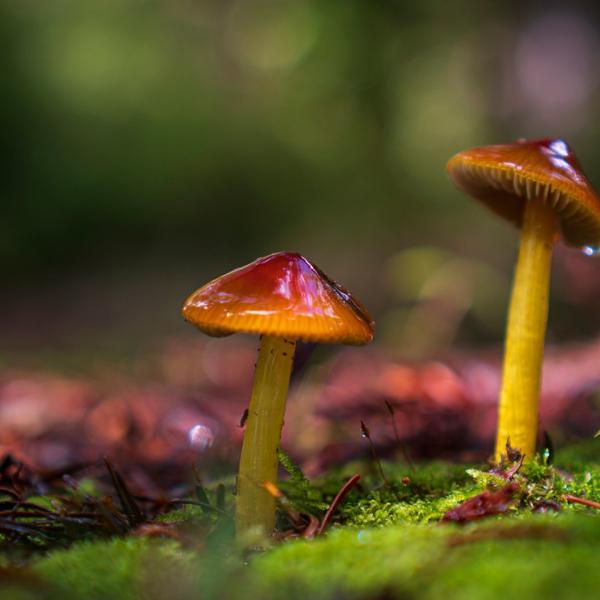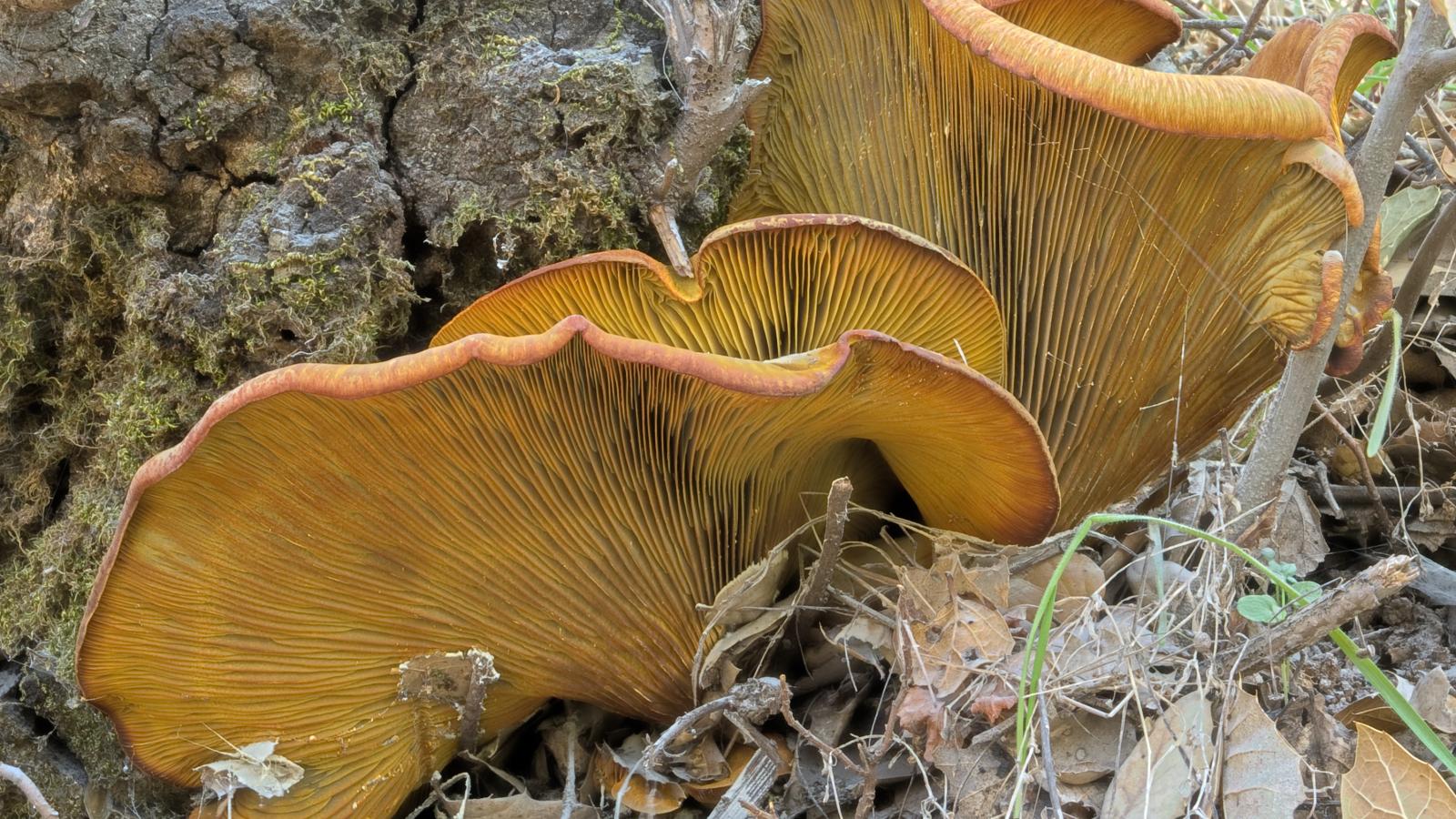A spooky chill is in the air as we enter October. What wicked and strange organisms lay out in the damp, dark woods? With a pumpkin-like color and deep gills, the western jack-o-lantern mushroom (Omphalotus olivascens) is a fascinating fungus.

Western jack-o'-lantern’s emit a ghostly green glow when the sun goes down (Karl Gohl and Debbi Brusco)
This spectacular mushroom is bioluminescent, meaning it produces and emits its own light! In the dark, the deep gills of these mushrooms give off a faint greenish glow that is strongest at the peak of spore production.
These mushrooms grow on wood and play a crucial role in decomposing fallen logs and branches, cycling nutrients in forest ecosystems. Look for western jack-o'-lanterns on stumps and downed logs as we head into rainy season and by carefully looking for pops of orange mushrooms with their characteristic deep, sharp gills.
Make sure not to confuse this poisonous mushroom with a different orange treat, like the chanterelle. Though the two mushrooms resemble each other in appearance, consuming a Jack-o'-Lantern will lead to a severe upset stomach.
Please note that foraging is not permitted in Midpen preserves. Though some mushrooms in the Santa Cruz Mountains are edible, telling the difference between them can be difficult and dangerous for even the best mushroom collector.

Each year, winter rains bring a variety of mushrooms out at Midpen preserves. Mushrooms come in all shapes, colors and sizes — some coral fungi have branching orange fingers, some tiny Mycena species are no bigger than an ant and some wax caps come in a rainbow of colors from green to yellow to red. All fungi are important members of their ecosystems. As decomposers, they help to break down waste!

